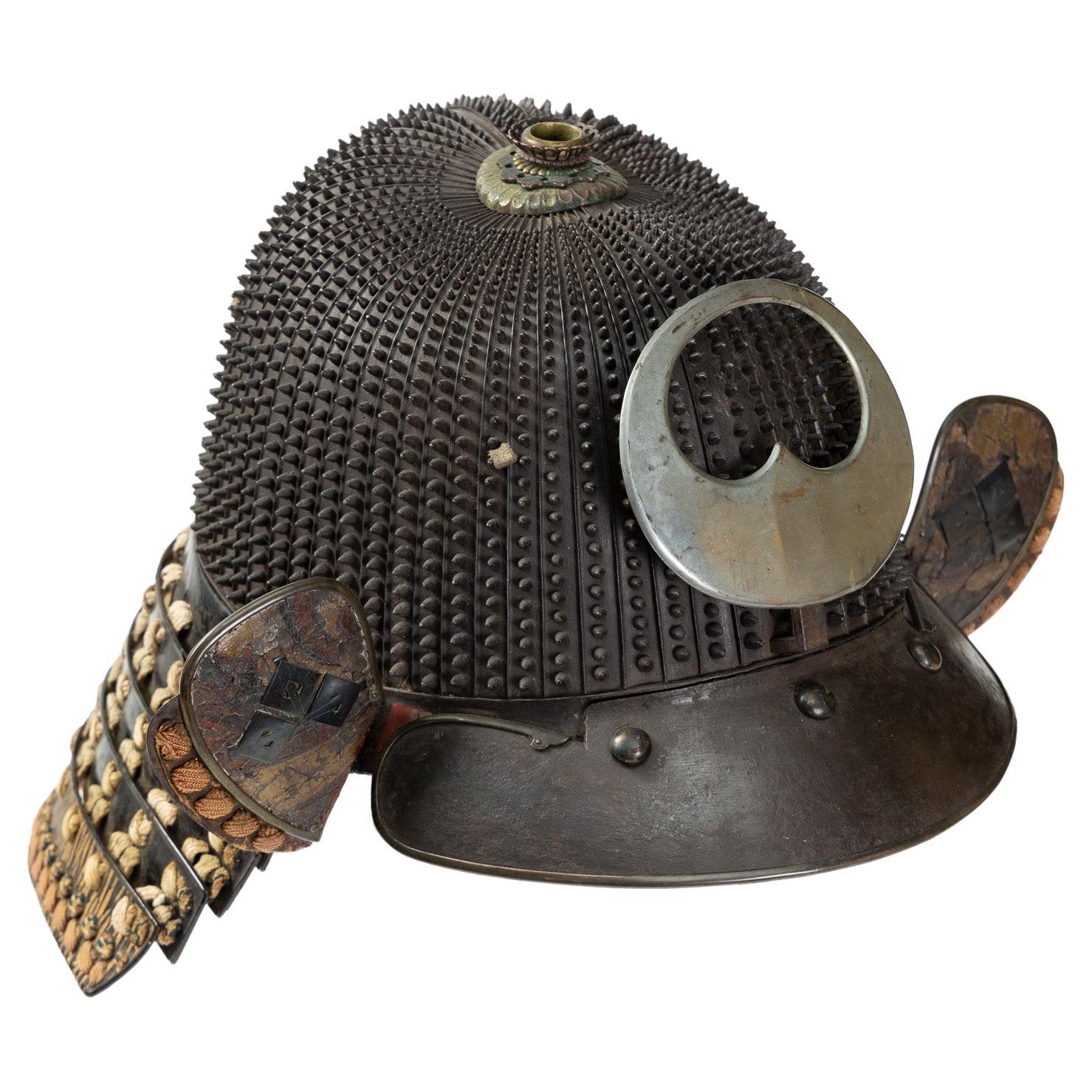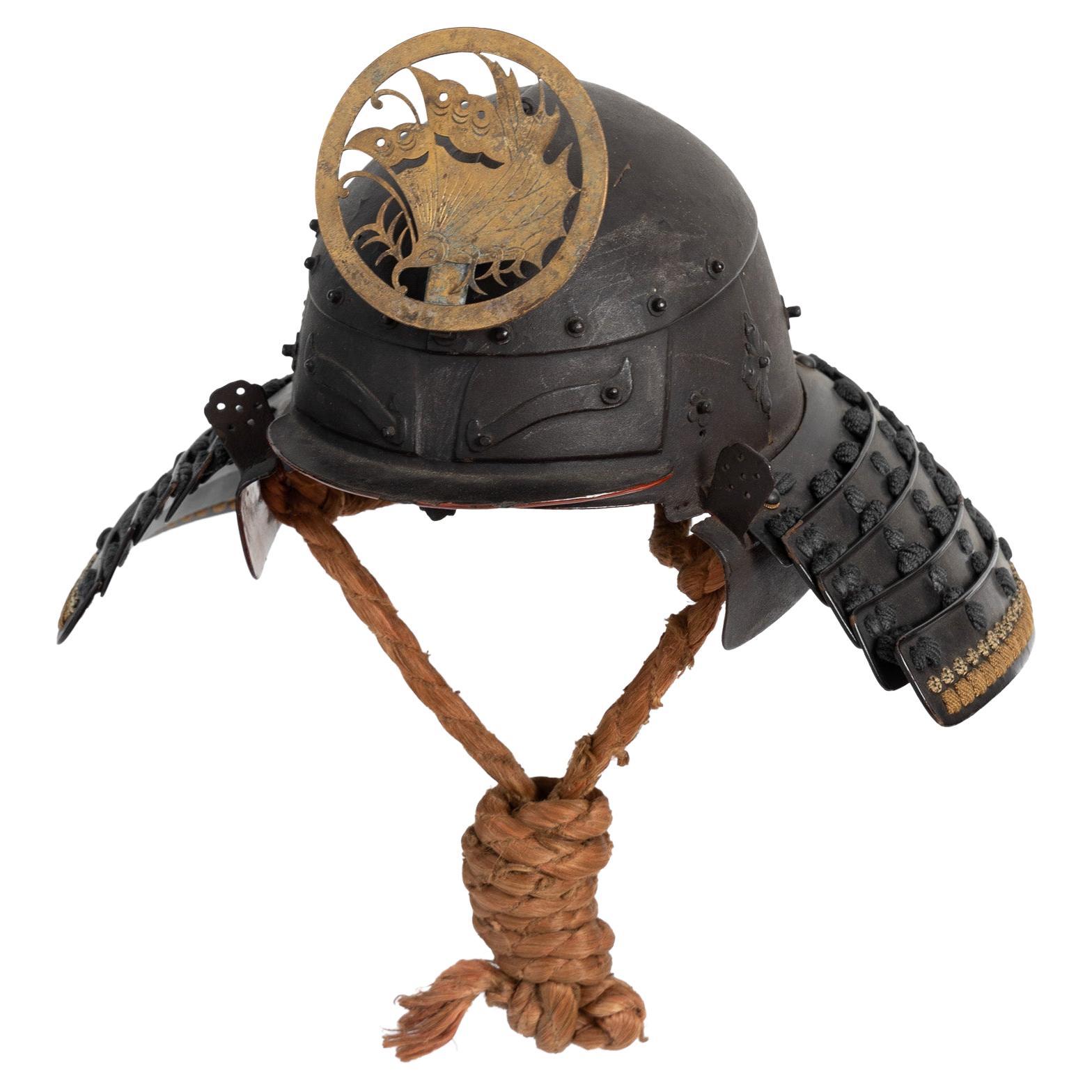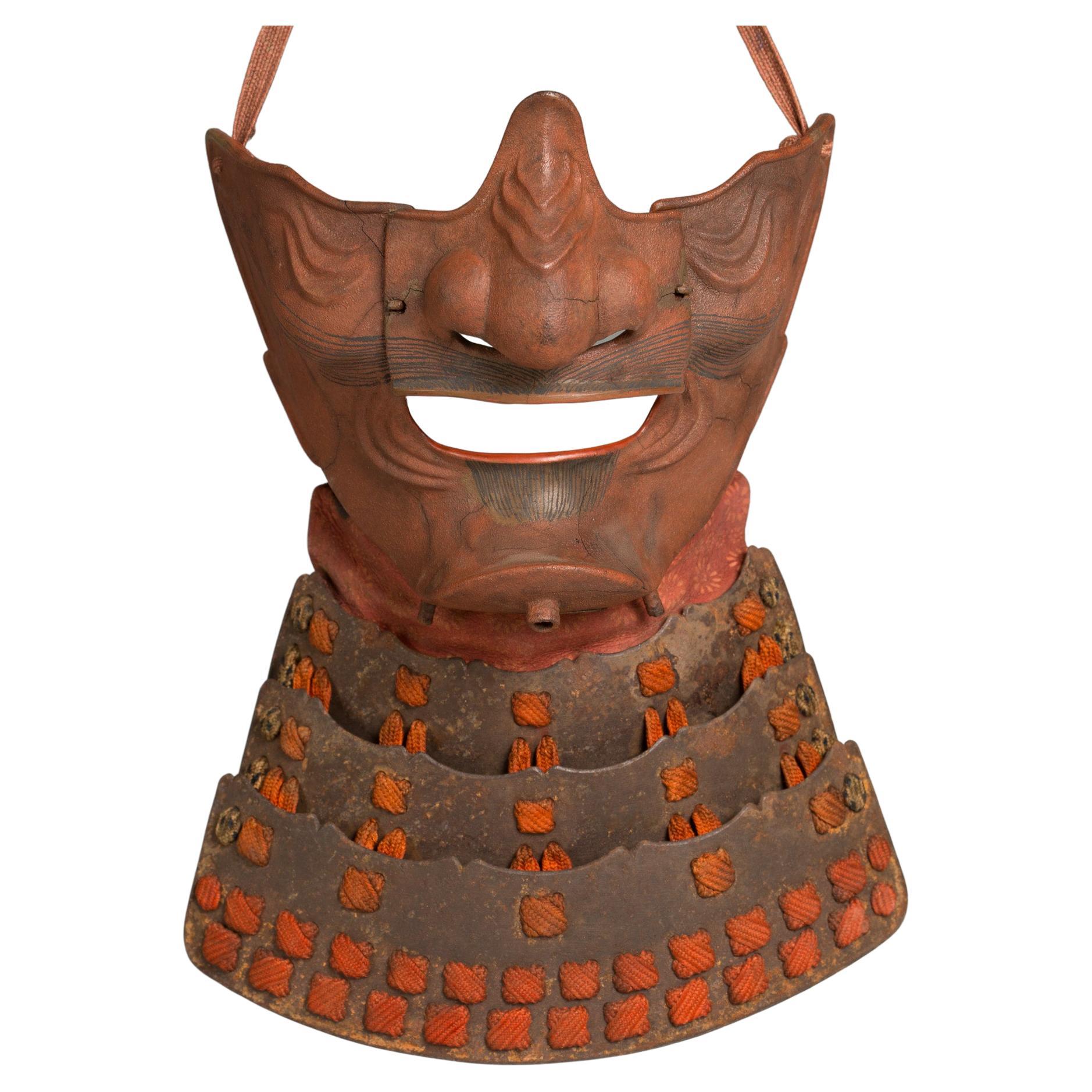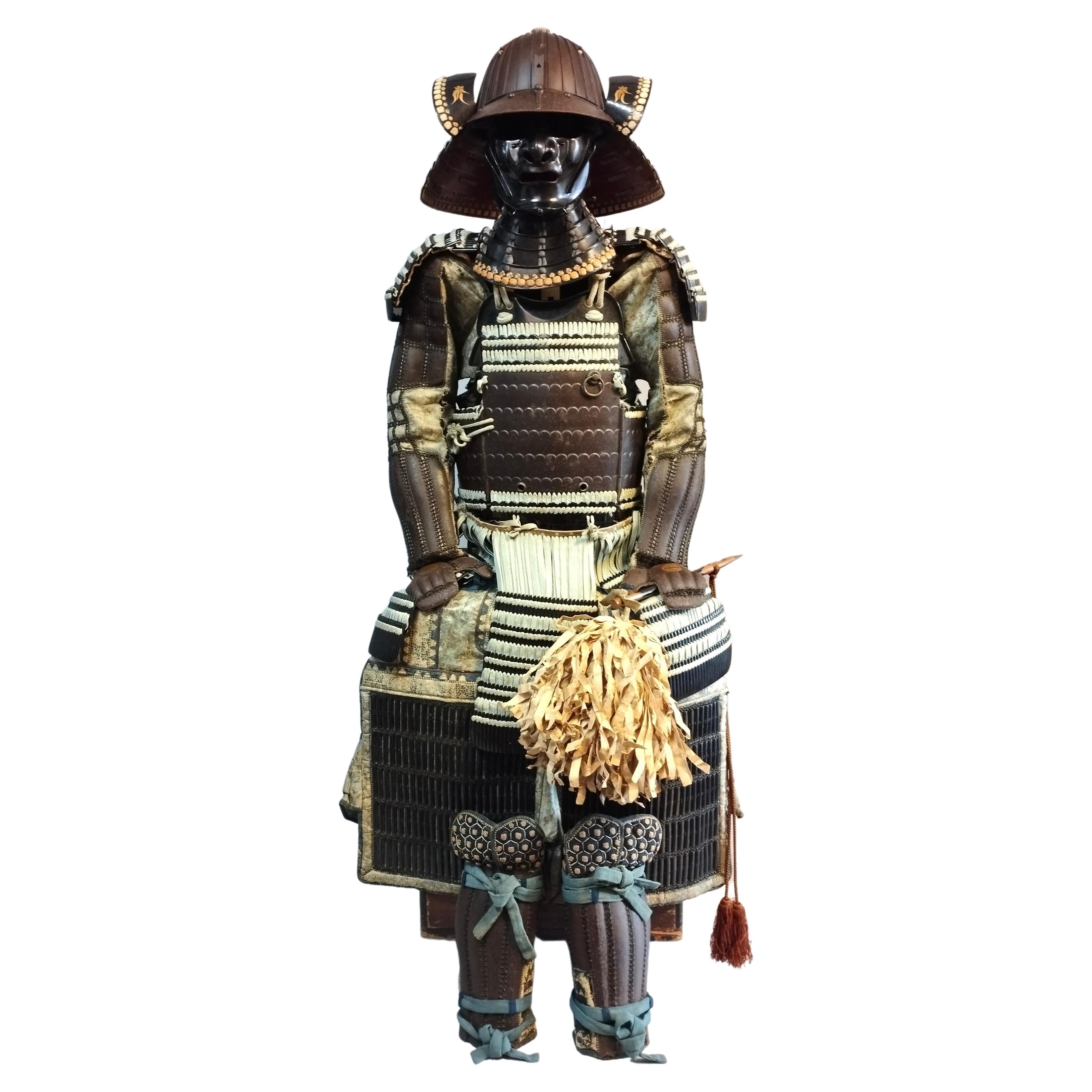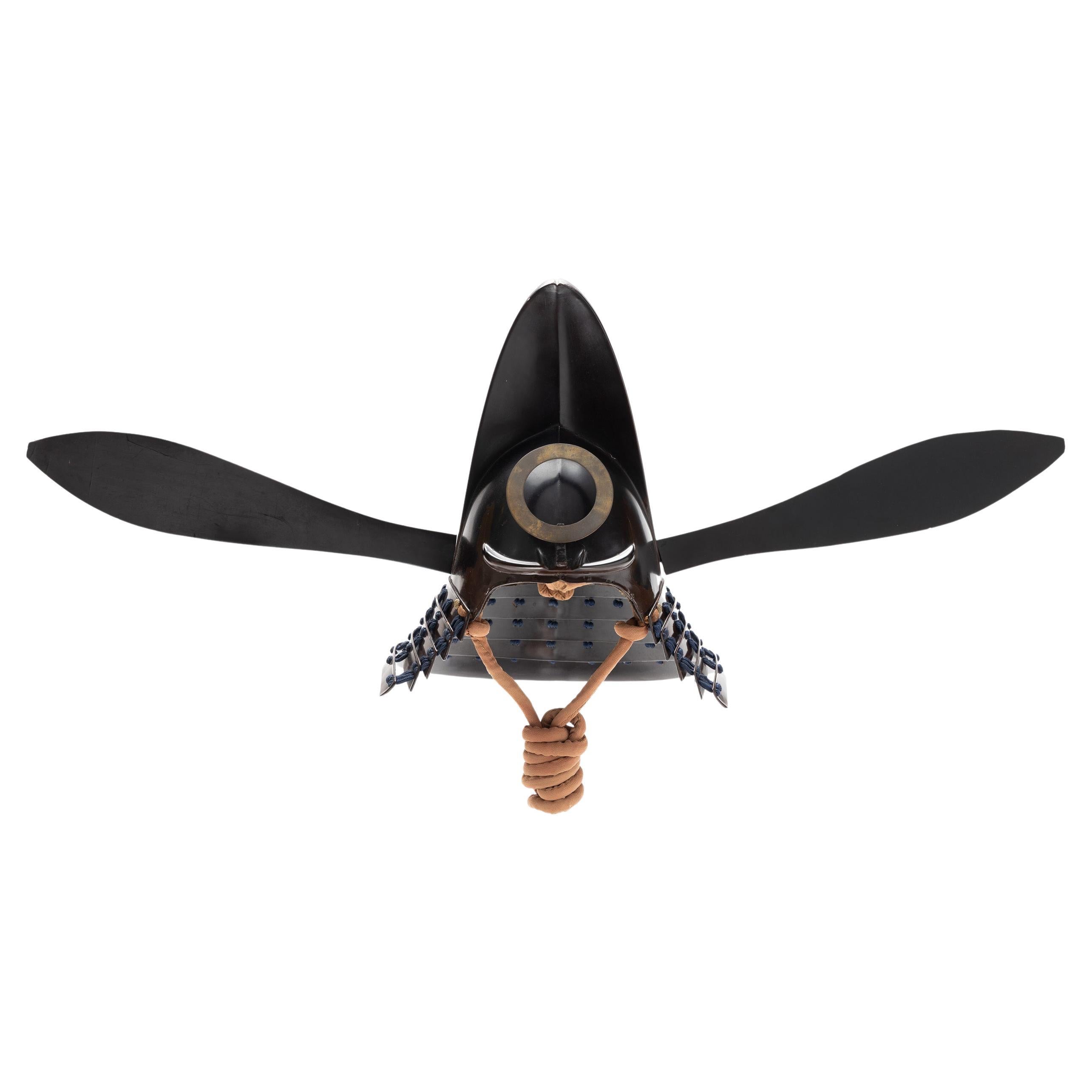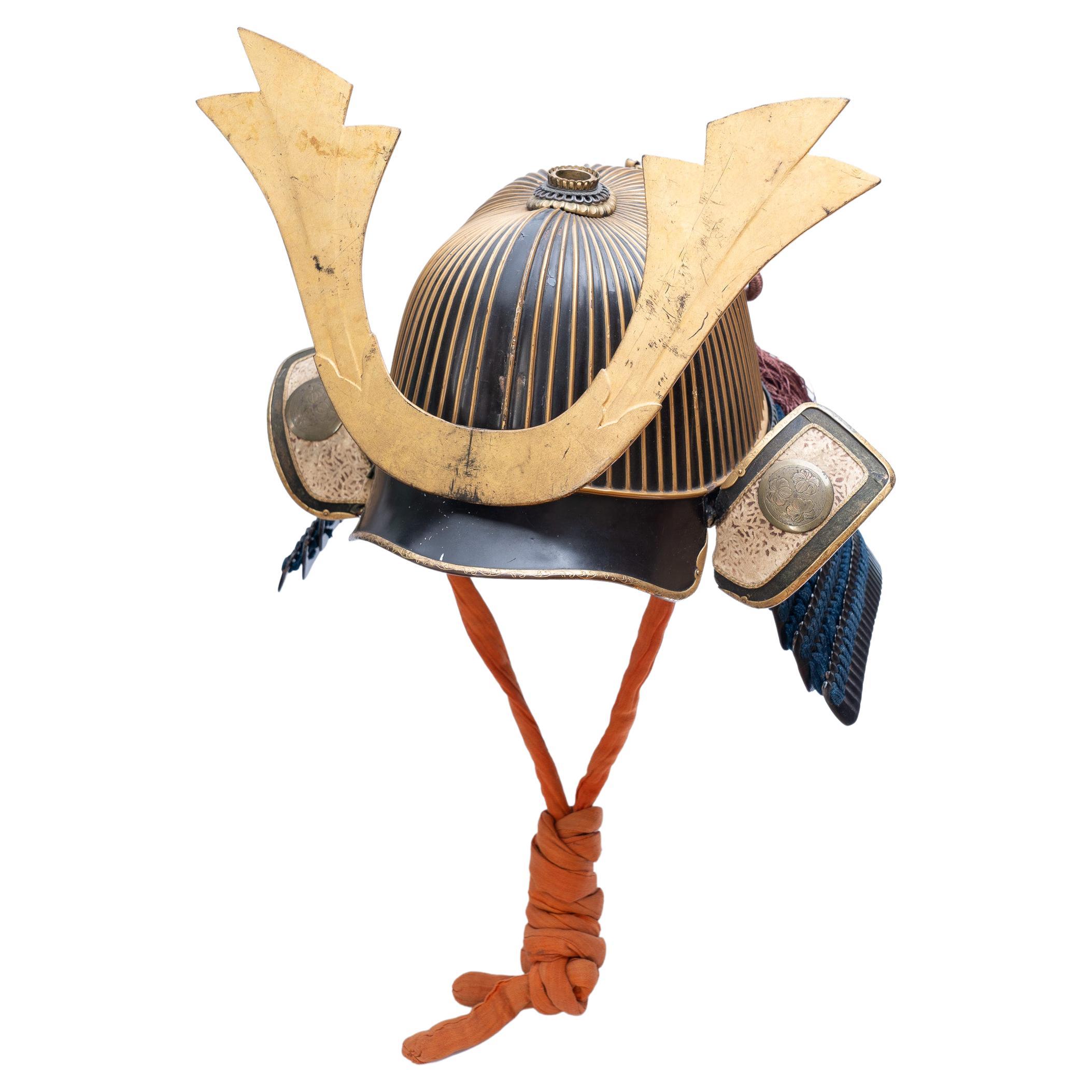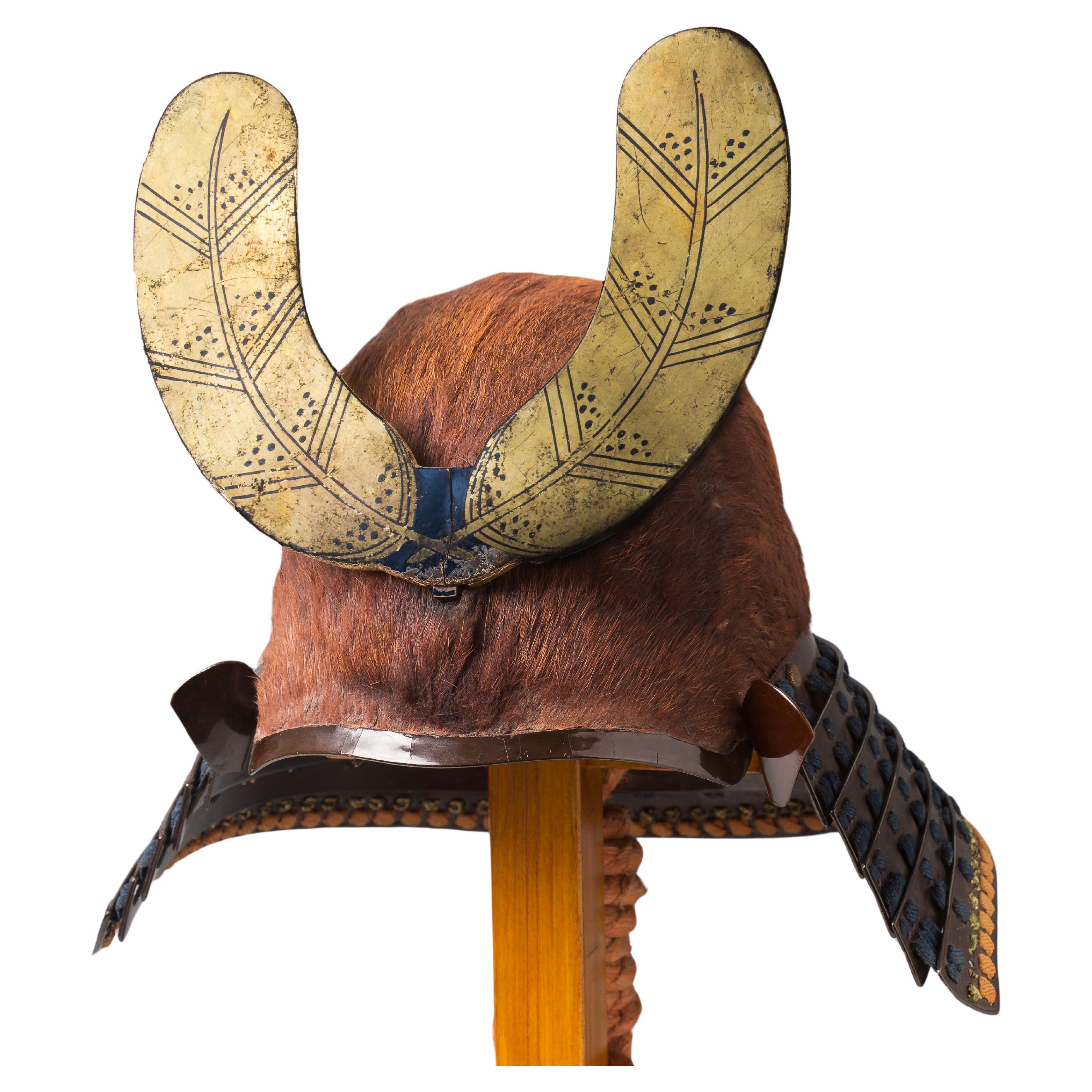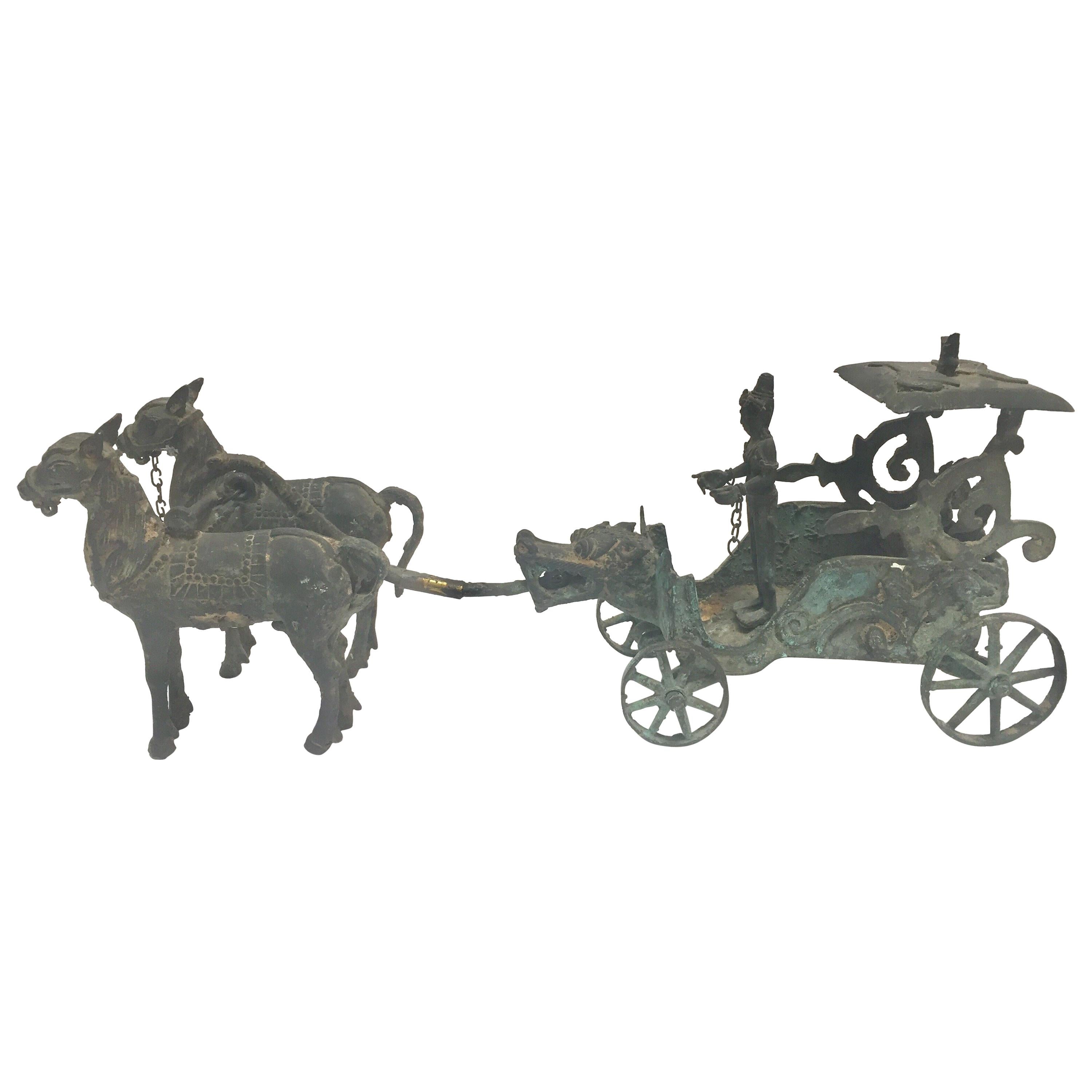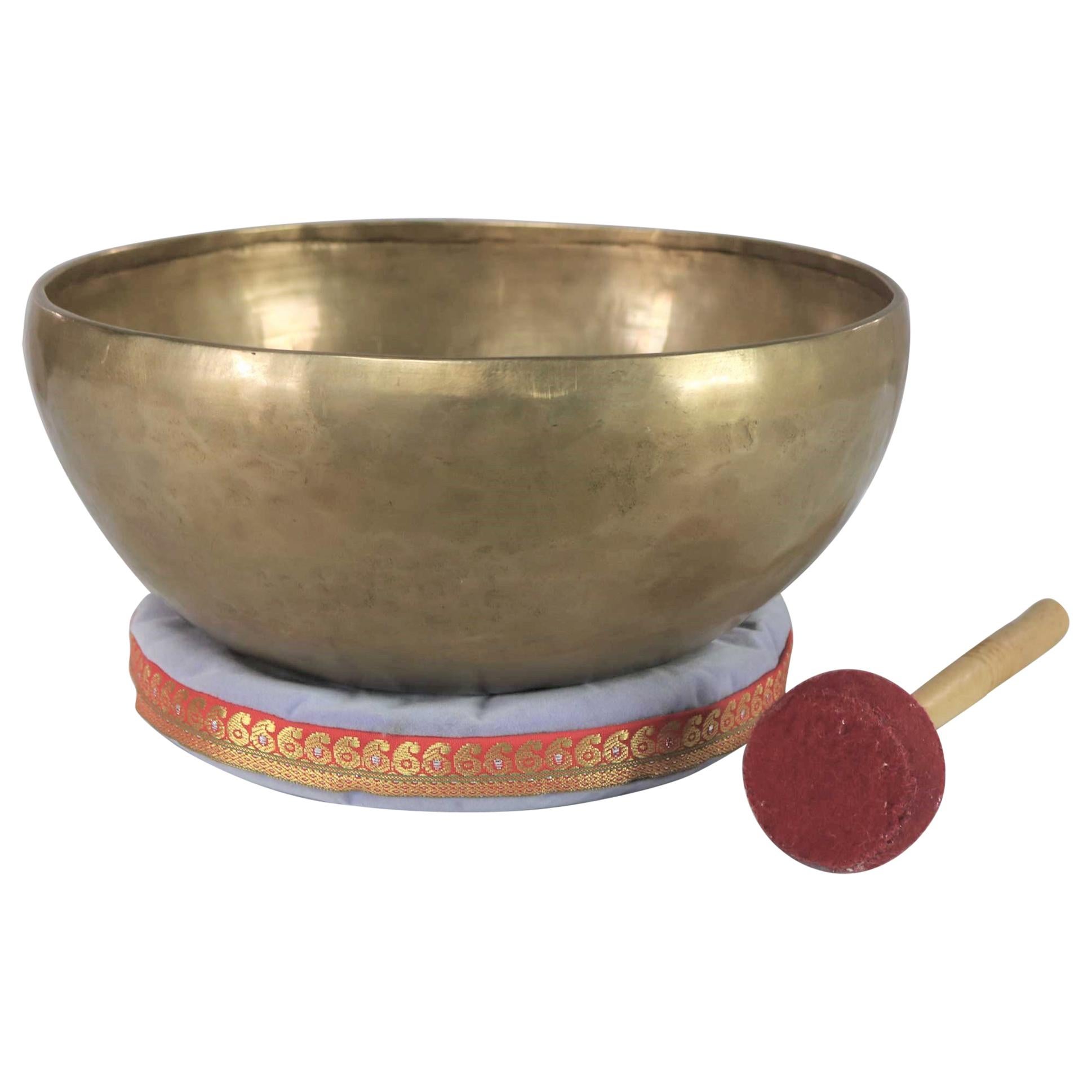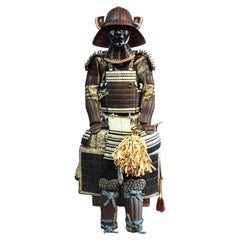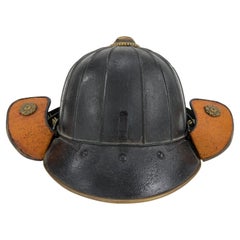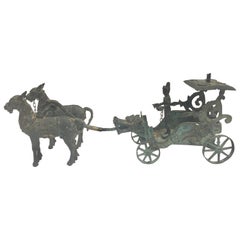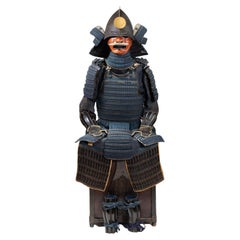
Tachi-dō Tosei Gusoku Samurai Armor with Momonari Type Helmet
View Similar Items
Want more images or videos?
Request additional images or videos from the seller
1 of 11
Tachi-dō Tosei Gusoku Samurai Armor with Momonari Type Helmet
About the Item
- Dimensions:Height: 19.69 in (50 cm)Width: 19.69 in (50 cm)Depth: 59.06 in (150 cm)
- Materials and Techniques:
- Period:
- Date of Manufacture:1700-1800
- Condition:
- Seller Location:Milano, IT
- Reference Number:1stDibs: LU4250227216462
About the Seller
5.0
Recognized Seller
These prestigious sellers are industry leaders and represent the highest echelon for item quality and design.
Established in 2005
1stDibs seller since 2018
10 sales on 1stDibs
Typical response time: 3 hours
More From This SellerView All
- Go-Mai Uchidashi Dō Tosei Gusoku Samurai Armor Decorated with an Embossed RabbitLocated in Milano, ITGo-mai uchidashi do tosei gusoku Samurai armor decorated with an embossed rabbit Edo period, 19th century This samurai armor is complete and original, with consistent elements...Category
Antique 19th Century Japanese Metalwork
MaterialsIron
$38,239Free Shipping - Dangae do tosei gusoku A blue-laced samurai armor with cuirass of double styleLocated in Milano, ITDangae do tosei gusoku A blue-laced samurai armor with cuirass of double style Edo Period, 18th century Kabuto [helmet]: Black lacquered eboshi-nari kabuto, in the form of this ...Category
Antique 18th Century Arms, Armor and Weapons
MaterialsIron
- Hon-kozane ni-mai do tosei gusokuLocated in Milano, ITHon-kozane ni-mai do tosei gusoku Samurai armor in revival style Edo Period, 17th to 18th century Signature on kabuto: Jōshū jū Saotome Ietada Kabuto [helmet]: A russet iron (tetsu sabiji) sixty-two plate kabuto, each mounted with twenty-five small tapered standing rivets (ko-boshi) of decreasing size; the front plate, larger than the others, is fitted with two lines of rivets, while the rear one is left empty, for a total of 1.550 rivets. The typical "Saotome-byo", an extra rivet which is almost an additional signature of the Saotome armorers, is visible inside. Maedate [helmet crest]: Kuwagata (stylized horns) with shakudo kuwagata-dai (support) fitted with three hanabishi (flower-shaped family crest) and a large gilt-wood peony Menpō [mask]: A russet iron (tetsu sabiji) ressei-men (mask with fierce expression) Dō [cuirass]: Ni-mai dō (made in two parts) with hon-kozane (true scale) construction. Stencilled leather plates with engraved shakudo borders, fine pierced kanamono (application) bearing a hanabishi. Sode [shoulder guards]: Large type (ō-sode), with fine kanamono and decorations. Kote [sleeves]: In russet iron, with a hanabishi on the back of the hand (tekko). Haidate [thigh guard]: Of hakama type (full trousers), made of tied rectangular iron plates. Suneate [shin guards]: Finished in black urushi lacquer. Accessories: A saihai (commander’s baton); high-level kara-bitsu (storage box) With its large sode (shoulder guards) and old-fashioned construction, the style of the armor is reminiscent of the medieval suits...Category
Antique Late 17th Century Japanese Arms, Armor and Weapons
MaterialsIron
- Koboshi Kabuto, Samurai Helmet with Standing Rivets Haruta SchoolLocated in Milano, ITKoboshi kabuto Samurai helmet with standing rivets Haruta School Early Edo Period, 17th century A 62-plate koboshi-bachi [helmet bowl with small s...Category
Antique 17th Century Japanese Arms, Armor and Weapons
MaterialsIron
- Okitenugui Kabuto Samurai Helmet Shaped as a Head Towel Saika, Early Edo PeriodLocated in Milano, ITOkitenugui kabuto Samurai helmet shaped as a head towel Saika, early Edo period, 17th century The Haruta armorers who moved to Kii province in the early 17th century, took the name from the village where they worked, Saika, near Wakayama, possibly on request of the local daimyo, Asano Yukinaga, a great armour amateur. Specialised in the construction of plate helmets, they produced mainly two typologies of kabuto: one with six plates covered with a chrysanthemum-shaped plate on top and one shaped as a “head towel”, called okitenugui. The latter type of kabuto employs very heavy plates crafted in a curved manner and was improved in order to make it resistant to firearms. This okitenugui kabuto features some distinctive decorations of the Haruta school, including the application of cut-out iron elements, including eyebrows, washers and lozenge-shaped decorations on the sides. The ring on the top, however, is a rare feature and could be used to hold a small war flag.Category
Antique 17th Century Metalwork
MaterialsIron
- Samurai Mask with a Fierce Expression Ressei MenpoLocated in Milano, ITSamurai mask with a fierce expression Ressei Menpo DATE Edo period (1615 - 1867), 18th century A red lacquered high-level mask, with fierce (res...Category
Antique 18th Century Japanese Metalwork
MaterialsIron
You May Also Like
- 18th Century Hirate Clan Samurai Armor with Signed Kabuto HelmetLocated in Fukuoka, JPThis is a truly exceptional set of 18th century Samurai armor that is sure to impress any collector or enthusiast. The patinated iron used in its construction has aged beautifully, giving the armor a truly unique appearance that is sure to catch the eye. The brocade silk and cotton padding used to line the armor not only provide a comfortable fit for the wearer, but also add an extra layer of decorative flair. One of the most striking features of this armor is the crests of the Hirate samurai clan that adorn it. These crests are a symbol of the clan's identity and heritage, and their presence on the armor speaks to the deep connection between samurai warriors and the clans they belonged to. The Kabuto...Category
Antique 18th Century Japanese Antiquities
MaterialsIron
- Japanese Samurai Helmet Kabuto Edo Period (1603-1867)Located in Hampstead, QCA Japanese Samurai black-lacquered helmet (kabuto) in suji bachi style and of a goshozan shape consisting of the: - main dome (hachi) made from 16 plates in natural iron riveted to...Category
Antique Early 19th Century Japanese Edo Metalwork
MaterialsIron
- Antique Asian Bronze Chariot with Dragon Head Pulled by HorsesBy RajhastaniLocated in North Hollywood, CAFrom the Ramakien a Thai Ramayana. A scene from Ramakian or Ramayan, the Indian epic Lakshman riding in a chariot along with Rama and Sita sitting in the back. After his victory over Ravana, Sri Rama prepares to leave for Ayodhya, Rama now told Vibheeshan that there was just one more day...Category
Early 20th Century Indian Folk Art Metalwork
MaterialsBronze
- Silver gold gilt Persian bib necklace with turquoise Middle Eastern AntiquesLocated in London, GBSilver gold gilt Persian bib necklace with turquoise Middle Eastern Antiques A Highly detailed gold gilt metal Persian bib necklace influenced by the ancient style with turquoise and...Category
Early 20th Century Persian Collectible Jewelry
MaterialsSilver
- Vintage Bronze Handmade Singing Bowl or Standing Bowl with Mallet on PillowLocated in Topeka, KSBeautiful singing bowl or standing bowl with a mallet and its playing pillow. Handmade of bronze or bell metal and showing the makers hand. It is in wonderful vintage condition with ...Category
20th Century Chinese Export Metalwork
MaterialsBronze
$956 Sale Price / set20% Off - Antique circa 1920 Chinese Export Floor Standing Bell with Wrought Iron StandLocated in GBWe are delighted to offer for sale this exquisite circa 1920 Chinese Export floor standing bell on wrought iron stand A very well made and decorative...Category
Vintage 1920s Chinese Chinese Export Metalwork
MaterialsBrass, Wrought Iron

